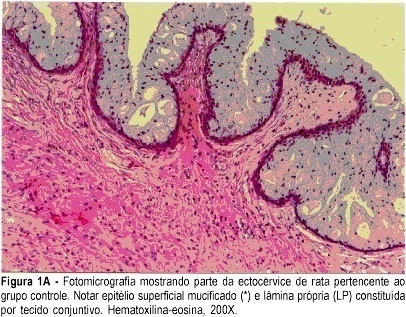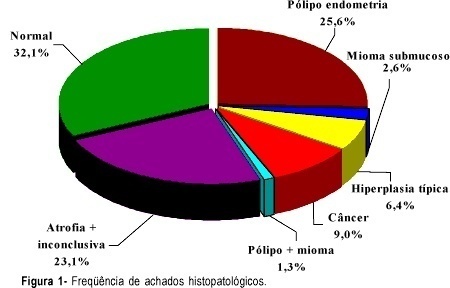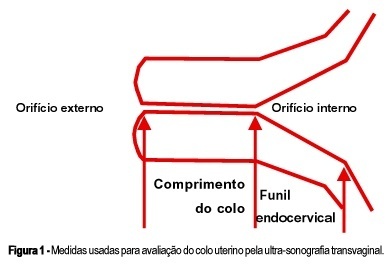Summary
Revista Brasileira de Ginecologia e Obstetrícia. 2003;25(4):255-260
DOI 10.1590/S0100-72032003000400006
PURPOSE: to compare maternal morbidity, neonatal results and some clinical and epidemiological characteristics among primiparous women who had one previous cesarean section, according to the performance of elective cesarean (EC) section or trial of labor (TL) during the second delivery. PATIENTS AND METHODS: this is a retrospective cross-sectional study on the second delivery of women who previously had a cesarean section and were assisted at the Center for Integral Assistance to Women's Health (CAISM/UNICAMP), from 1986 to 1998. Data were collected from 2068 clinical records corresponding to 322 cases of EC and 1746 of TL. Data analysis was performed through percentage distribution of the EC and TL cases and also the distribution of variables between these two groups, using the chi2, chi2 for trend and Fisher exact tests to evaluate the statistical difference, with a significance level of 95%. RESULTS: the indication of EC decreased progressively with time, from 22.6% in 1986 to 5% in 1998. Maternal morbity was similar and low in both groups (1.24% and 1.21%). There was no significant difference between groups regarding Apgar score and stillbirths, but there was a significantly higher proportion of premature newborns and with birth weight below 2.500 g and above 4.000 g in the group who underwent EC. The prevalence of EC was significantly higher in women 35 or more years old, with previous or current history of hypertensive disorder, diabetes or with a first dead child, as well as with changes in the volume of amniotic fluid. CONCLUSIONS: performing TL progressively increased during this period of thirteen years, without any increase of maternal and/or neonatal morbidity. The indication for EC followed medical criteria related to unfavorable maternal and/or fetal clinical conditions for vaginal delivery.

Summary
Revista Brasileira de Ginecologia e Obstetrícia. 2003;25(4):249-254
DOI 10.1590/S0100-72032003000400005
PURPOSE: to assess the morphological and morphometric alterations in the uterine cervix of pregnant albino rats determined by local hyaluronidase administration. METHODS: ten rats with a positive pregnancy test were randomly distributed into two equal groups. The control group consisted of rats that received a single dose of 1 mL distilled water in the uterine cervix, on gestational day 18, under anesthesia. The experimental group consisted of rats that received 0.02 mL hyaluronidase, diluted in 0.98 ml distilled water (total = 1 mL), in the same conditions as those of the control group. On day 20, the rats were anesthetized and submitted to dissection. The uterine cervix was prepared for morphological and morphometric study at light microscopy (hematoxylin and eosin, and Masson trichrome). RESULTS: in the experimental group, greater thinning of the superficial mucified epithelium was observed, with lamina propria rich in blood vessels and eosinophils. Diversely, the control group showed a large concentration of collagen fibers. The histometric analysis in the experimental group was characterized by a smaller number of collagen fibers (mean = 248 versus 552 of control; SD = 49.7 versus 31.1 of control). The parametric method (Student's t test) showed a significant difference between groups (p<0.0001). CONCLUSION: the local use of hyaluronidase in the cervix of pregnant rats determined predominance of loose connective tissue and a smaller concentration of collagen fibers.

Summary
Revista Brasileira de Ginecologia e Obstetrícia. 2003;25(4):243-248
DOI 10.1590/S0100-72032003000400004
PURPOSE: to analyze the influence of seminal parameters on intrauterine insemination (IUI) outcomes in patients with male factor and to emphasize the predictive value of each parameter for the successful result. METHODS: two hundred and thirty-nine IUI cycles (155 couples) were analyzed for 15 months. Female patients were submitted to ovary hyperstimulation according to the "I Consenso Brasileiro de Indução de Ovulação". Seminal analysis based on the World Health Organization (WHO) for sperm concentration and motility was used and sperm morphology was evaluated according to Kruger's criterion. Samples to be used in IUI were prepared by colloidal discontinued gradient (ISolate®). After IUI two patient groups were formed: group G - positive for pregnancy and group NG - negative for pregnancy. RESULTS: there was no statistical difference in total sperm concentration per mL, total motility and progressive motility before and after the ISolate® procedure. When sperm morphology was compared between the two groups, a statistical difference was observed (group G=10.6% normal morphology; group NG=6.4% normal morphology; p<0.05). Better pregnancy results were obtained when the number of inseminated spermatozoa was more than 15 x 10(6)/mL. CONCLUSIONS: sperm morphology and the number of inseminated sperm seem to be positive parameters for pregnancy and should be emphasized during male infertility propaedeutics.
Summary
Revista Brasileira de Ginecologia e Obstetrícia. 2003;25(4):237-241
DOI 10.1590/S0100-72032003000400003
PURPOSE: to investigate the accuracy of hysteroscopy as a method for the evaluation of the uterine cavity in women with postmenopausal bleeding. METHODS: a cross-sectional study that consisted of the evaluation of 78 women with postmenopausal bleeding submitled to histeroscopy and directed biopsy in the period from January 2000 to June 2002 in the Bahia State Oncology Center. Hysteroscopy findings were classified as benign (leiomyoma, polyp, atrophy, normal) and suspect (hyperplasia, thickening, cancer) and the histopathologic findings as benign (leiomyoma, polyp, non-atypical hyperplasia, atrophy) and malignant (cancer and atypical hyperplasia). The results of hysteroscopy were compared with the pathologic findings. RESULTS: in relation to the suspect results (thickening, hyperplasia and cancer) hysteroscopy sensitivity and specificity were 85.7 and 88.7%, respectively. Positive and negative predictive values were 42.83 and 98.4%. Likelihood ratios of positive and negative tests were 7.6 and 0.16. Accuracy was 88.4% and kappa index, 0.5. CONCLUSION: hysteroscopy alone did not show an acceptable accuracy in the study, reinforcing the idea that its main advantage is to direct the biopsy, and it must always be associated with the histological diagnosis.

Summary
Revista Brasileira de Ginecologia e Obstetrícia. 2003;25(4):229-235
DOI 10.1590/S0100-72032003000400002
PURPOSE: to determine the association between ultrasonographic, hysteroscopic and histopathologic findings in women with postmenopausal uterine bleeding. METHODS: a retrospective, cross-sectional study was conducted enrolling 156 women with postmenopausal bleeding attended at the Diagnostic Center - IMIP during the period of January 1995 to December 2001. According to the results of the endometrial examination (ultrasound), the patients were classified as having an abnormal or normal finding depending on the cutoffs of 4 or 5 mm. The most common histologic and hysteroscopic findings were studied and classified as premalignant/malignant lesions (hyperplasia/endometrial cancer) or benign findings. These results were compared using the kappa index, to establish the agreement between these techniques. RESULTS: the frequency of endometrial thickening was 75.0 and 67.3% according to cutoffs of 4 mm and 5 mm, respectively. Hysteroscopic findings were atrophic endometrium in 59 (37.8%), endometrial polyp in 56 (35.9%), endometrial hyperplasia in 17 (10.9%), cancer in 16 (10.3%), still active endometrium in 1 (3,2), and other findings in 3 (1.9%). The two most frequent histopathologic findings were also atrophic endometrium (31.4%) and endometrial polyps (26,.3%), followed by scanty material (16.0%), endometrial cancer (10.9%), endometrial hyperplastic changes (9.0%), and others (6.4%). A good agreement between hysteroscopic and histopathologic findings was observed (kappa = 0.61). CONCLUSIONS: the frequency of endometrial thickening was 75.0 and 67.3% according to cutoffs of 4 mm and 5 mm, respectively. No premalignant or malignant lesions were missed when an endometrial cutoff of 4 mm was used. The most frequent hysteroscopic and histopathologic findings were atrophic endometrium and endometrial polyps and a good agreement between these findings was encountered.
Summary
Revista Brasileira de Ginecologia e Obstetrícia. 2000;22(10):647-651
DOI 10.1590/S0100-72032000001000008
Purpose: to study the effects of ciprofloxacin on abortion percentage, maternal weight gain during pregnancy, fetal and maternal death, gross fetal malformation, newborn number, weight and neurological reflexes. Methods: we used 30 Wistar rats, divided into three groups: D50-treated (ciprofloxacin, 50 mg/kg); D100-treated (ciprofloxacin 100 mg/kg) and control group which received physiological saline per os, from the 1st to the 7th day after mating. We studied abortion percentage, maternal weight gain during pregnancy, fetal and maternal death, gross fetal malformation, newborn number and weight at 1st, 3rd, 5th and 10th day of life and newborn neurological reflexes at 1st, 3rd, 5th and 10th day of life. Results: there was no difference between groups in the number of rats that became pregnant. The same was found for maternal weight gain and newborn number. There was a difference in newborn mean weight on day 3rd, 5th and 10th (p = 0.006, 0.01 and 0.03, respectively). The D100 newborn group was the one with less weight gain up to the 10th day of life. We found a significant difference (p = 0.002) in the newborn orientation reflex on the 1st day of life, that disappeared afterwards. No abortion or gross malformation was found in this study. Conclusions: ciprofloxacin modified the newborn weight and reflex on the first days of life. In conclusion, we consider that the use of ciprofloxacin should be restricted during the pregnancy.

Summary
Revista Brasileira de Ginecologia e Obstetrícia. 2000;22(10):641-646
DOI 10.1590/S0100-72032000001000007
Purpose: to evaluate the influence of cigarette smoking on uteroplacental, fetoplacental and fetal blood flow by obstetric Doppler velocimetry of the uterine, umbilical and middle cerebral arteries. Method: a prospective study with 42 healthy pregnant women, 20 of whom were smokers and 24 nonsmokers. Ultrasound was performed initially to determine the gestation time. The pregnant women next underwent pulsed and color Doppler velocimetry of the uterine, umbilical and middle cerebral arteries at the 24th, 28th, 32nd, 36th, and 40th week. The smokers were instructed not to smoke for at least two hours before the test. Results: the mean resistance index (RI) of the right and left uterine arteries was greatest in the smoking group at the 36th week [mean (SD) = 0.501 (0.034)], (p = 0.002). The pulsatility index (PI) of the umbilical artery was greatest in the smoking group at the 28th week [mean (SD) = 1.135 (0.182)], (p = 0.008). No difference in the PI of the middle cerebral artery (MCA) was detected between the two groups. However, the MCA/umbilical PI ratio was lower in the smoking group at the 32nd [mean (SD) = 1.977 (0.291)], (p = 0.027), and 36th week [mean (SD) = 1.850 (0.465)], (p = 0.014). Conclusion: it was concluded that smoking increases resistance in the uteroplacental and fetoplacental circulation while simultaneously reducing resistance in the MCA, imitating a "brain-sparing" effect, most likely due to chronic hypoxia.
Summary
Revista Brasileira de Ginecologia e Obstetrícia. 2000;22(10):633-639
DOI 10.1590/S0100-72032000001000006
Purpose: to evaluate the risk of preterm delivery using the fetal fibronectin test and the measurement of the cervix by transvaginal ultrasonography in pregnant women with previous preterm delivery. Methods: one hundred and seven women were enrolled in the study at 24th, 28thand 32ndweek to detect the presence of fetal fibronectin by immediate-reading membrane test and to perform vaginal ultrasonography to measure the length of the cervix between the internal and external cervical os. The cervix was considered to be short when the cervical length was at or below the cutoff set by the receiver-operating characteristic (ROC) curve for prediction of preterm delivery. Sonographic cervical length and fetal fibronectin were compared to assess the risk of preterm birth before 34 and 37 weeks. Results: the spontaneous preterm delivery rate was 37.4% (40/107). The analysis made by the ROC curve indicated 30 mm as the best cutoff to maximize sensitivity and specificity at 24 and 28 weeks and 25 mm at 32 weeks of gestation. The positive test of fetal fibronectin had a significant relative risk (RR: 1.77; 95% confidence interval (IC): 1.10-2.84) to predict delivery before 37 weeks, when compared with a negative test, only at 28 weeks. The presence of short cervix at 24, 28 and 32 weeks showed a significative RR for birth before 37 weeks. The highest RR occurred with a short cervix at 24 weeks (RR: 4.42; 95% CI: 1.25-15.56). Conclusion: we concluded that the measurement of uterine cervix by vaginal ultrasonography is better than the fetal fibronectin test for evaluating the risk of preterm delivery in women with previous preterm delivery.
